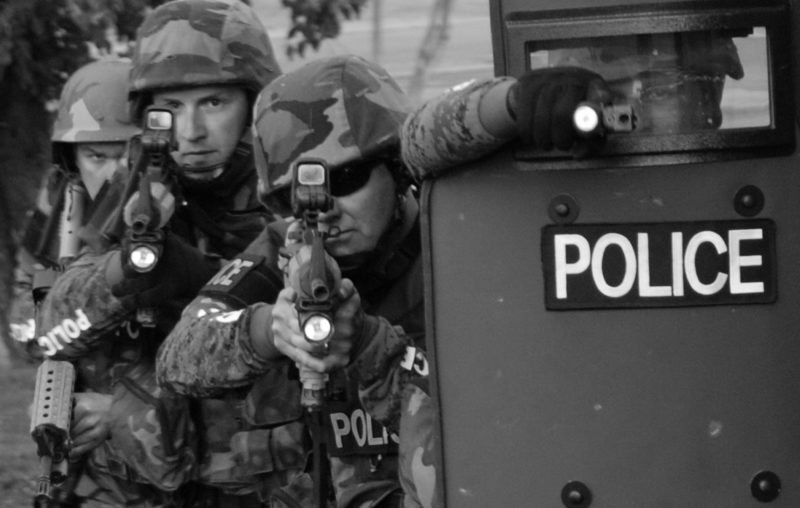In 1966, the first responders to the UT Tower shooting included some of those you might expect — police officers. The attack on campus was unlike anything U.S. law enforcement had seen at the time. And because of this, protocol was forced to change.
It’s hard to go a week in America without a mass shooting. They happen unexpectedly – at night clubs, high schools, office parties.
But on Aug. 1, 1966, when Charles Whitman climbed to the 28th floor of the University of Texas at Austin tower and began shooting down at the campus below, it was almost unheard of.
Commander Todd Gage oversees Austin’s special operations bureau. “When you had the tower shooting, we hadn’t seen that as law enforcement in the United States,” Gage says. “That was something brand new.”
Gage says the circumstances of the shooting were unique: “Somebody from an elevated position, a tactical advantage on a tower, shooting innocent folks below him at a university campus.”
Should a mass shooting happen in Austin today, Gage says it would unfold like it did in 1966. After shots are fired, there would be an influx of 9-1-1 calls.
“We would be sending officers there to assess the situation and of course, just like in ’66, once they come on scene they would start taking fire just like they did then,” Gage says.
In 1966 those first officers were uniform cops on their beats. Today, patrol officers would also be first on the scene – it makes sense because they’re stationed around the city, so some officers would already be nearby. But that’s where the similarities end – at least for now.
Milton Shoquist was among the Austin police officers that day who responded to reports of a man shooting from the UT-Austin tower. He was six weeks out of the academy. But even seasoned officers weren’t prepared for what they faced.
“Chaotic is very descriptive of what we faced that day,” Shoquist says. “We were just kind of flying by the seat of our pants. There was no plan, no training, when you encounter something like that.”
There was also limited weaponry. Officers had revolvers back then, which require manual reloading. Nowadays, some patrol officers have rifles – and access to protective gear. But more importantly, most officers have at least some training for a mass shooting.
Pete Blair is the executive director of the Advanced Law Enforcement Rapid Response Training center at Texas State University. Blair runs active shooter training for law enforcement. Over the past 50 years, standards for how to handle an active shooter have changed.
“They need to go to the sounds of gunfire,” Blair says. “They need to find the shooter and stop them as quickly as possible.”
But in ’66, there was no protocol.
“You had the tower shooting,” he says. “When that happened it was patrol officers who dealt with that problem. They ultimately went in and went up the tower to confront the shooter.”
Officers Houston McCoy and Ramiro “Ray” Martinez shot and killed Whitman. They reached the shooter after a chaotic hour-and-a-half. There was a lack of police department leadership and there was no model for how to handle a situation like that.
That same decade, police departments started building special teams in reaction to race riots and mass shootings. Los Angeles was the first. They called it Special Weapons and Tactics, or SWAT.
“What we saw was a change in policing toward more and more specialization,” Blair says. “An active shooter situation would become the problem of a tactical team or a SWAT team – people who are specifically trained and their primary job is to deal with those kind of situations.”
But 30 years later, this backfired in a big way.
In 1999, two Colorado high school students killed 12 of their classmates and one teacher during a 50-minute shooting spree. Even though police showed up three minutes after shooting began, SWAT officers didn’t enter the school until nearly two hours later.
“The shooters had free reign to murder students in the school,” Blair says.
The protocol was for patrol to secure the scene, call in SWAT and then wait for these specialized officers to handle it. Victims might have been saved if police hadn’t depended on SWAT.
“Again we saw a shift and realization that an active shooter situation, because it’s ongoing violence, really is a problem for a patrol officer to deal with and resolve,” Blair says.
It’s still protocol for SWAT teams to be called. But because it’s now common for patrol officers to have active shooter training, they can act immediately. Blair says their first objective would be to bypass the wounded until the shooter is taken care of.
So today the end result would likely look much the same as it did in 1966: patrol officers taking the shooter down. But with today’s training, we might not have –as we did in 1966 – 14 dead and dozens wounded near the UT tower.


